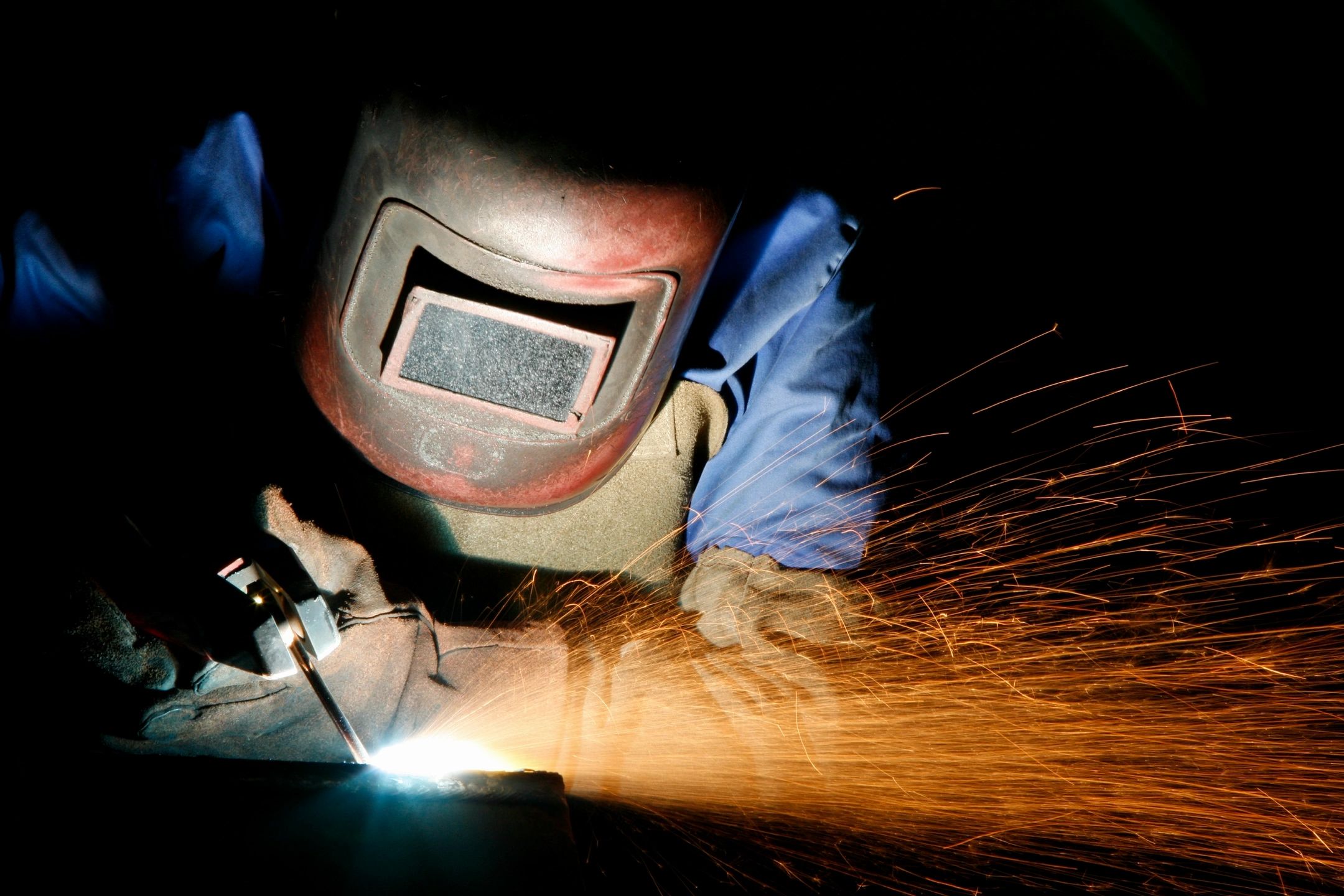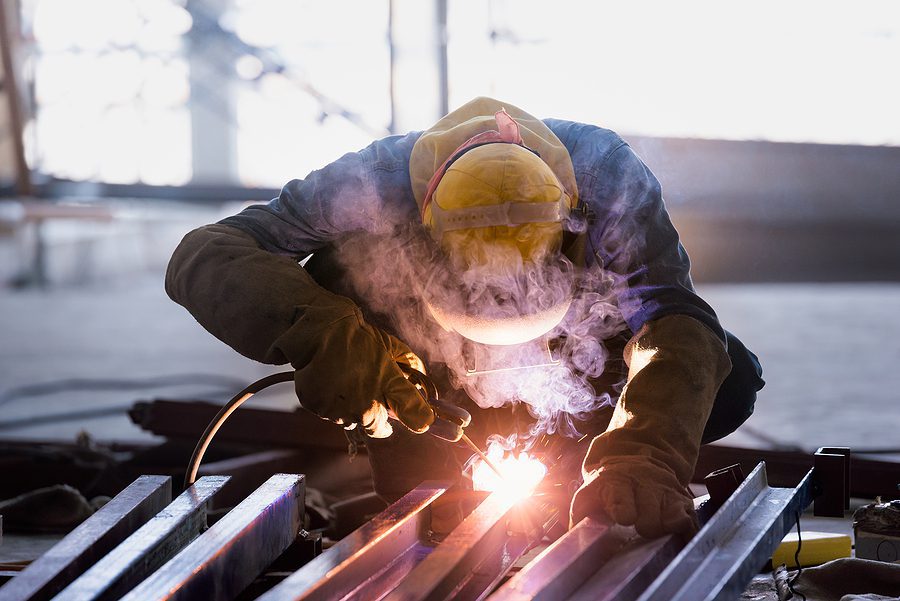All Regarding Welding: Key Insights Into Techniques and Finest Practices for Success
Welding includes a selection of strategies, each matched for particular materials and applications. Understanding these methods, such as GMAW, SMAW, and TIG, is important for accomplishing suitable outcomes. Furthermore, the best tools and safety techniques can not be ignored. As preparation and fixing play crucial roles in the welding process, understanding these components can substantially boost the top quality of the end product. What are the crucial aspects that assure a successful weld?
Comprehending Various Welding Strategies
Welding strategies encompass a selection of methods, each fit to specific applications and materials. Amongst one of the most typical techniques are Gas Metal Arc Welding (GMAW), Protected Steel Arc Welding (SMAW), and Tungsten Inert Gas Welding (TIG) GMAW, also recognized as MIG welding, is preferred for its speed and adaptability, making it perfect for slim materials. SMAW, or stick welding, is preferred for its simplicity and efficiency in outside environments, specifically with thicker steels. TIG welding offers accuracy and control, making it ideal for intricate job and non-ferrous metals (Welding). Each technique has its special benefits and considerations, allowing welders to select the most effective method based on the job's needs, material type, and preferred end results. Understanding these techniques is crucial for effective welding
Important Welding Equipment and Tools
While various welding techniques require certain skills, the right devices and tools are just as important for attaining quality outcomes. Important welding devices consists of welding equipments, which vary depending on the method-- such as MIG, TIG, or stick welding. Protective gear, including aprons, safety helmets, and gloves, warranties safety and convenience during the procedure. Furthermore, clamps and components aid safeguard materials in position, making certain accuracy in welds. Consumables like welding poles, wire, and securing gas are likewise vital elements that influence the top quality of the weld. Moreover, tools such as cutters and mills facilitate surface area preparation and post-weld ending up, adding to a professional result. Spending in premium devices inevitably improves the efficiency and efficiency of welding jobs.
Security Practices in Welding
Appropriate security techniques are important in the welding industry to safeguard employees from possible risks. Welders need to put on appropriate individual protective equipment (PPE), including safety helmets with appropriate shading, gloves, and flame-resistant clothes. Sufficient ventilation is important to decrease direct exposure to unsafe fumes and gases generated throughout the welding procedure. Furthermore, employees ought to be educated in the right handling of welding equipment to avoid accidents. Fire precaution, such as maintaining flammable materials away from the welding location and having fire extinguishers conveniently offered, are necessary. Routine assessments of tools and work spaces can assist recognize potential threats before they result in accidents. By adhering to these safety and security practices, welders can produce a much safer working setting and minimize threats related to their trade.
Readying Products for Welding
Preparing materials for welding is a crucial action that considerably affects the top quality and honesty of the final product (Belgrade Fabrication). Proper prep work involves cleaning up the surfaces to eliminate impurities such as rust, oil, and dust, which can endanger the weld. Methods such as grinding, fining sand, or making use of solvents are frequently utilized to attain a clean surface. Additionally, guaranteeing that the materials mesh comfortably is crucial; voids can bring about weak welds. It's also essential to take into consideration the positioning and positioning of the components, as this will affect the ease of welding and the last result. Selecting the proper filler product and making certain compatibility with the base steels is essential for attaining strong, durable welds.
Tips for Achieving High-Quality Welds
Accomplishing high-quality welds calls for interest to information and adherence to ideal methods throughout the welding procedure. Proper joint prep work is important, making certain surfaces are cost-free and tidy from contaminants. Selecting the proper filler material and welding technique based upon the base steels is vital for perfect bonding. Maintaining regular travel rate and angle while welding can promote and avoid issues harmony. Additionally, controlling warm input is important; excessive warmth can cause warping and compromised joints. If needed, on a regular basis checking the welds throughout the procedure allows for immediate adjustments. Ultimately, utilizing suitable post-weld therapies, such as cleansing and anxiety alleviation, can improve the toughness and stability of the weld, ultimately making sure a successful outcome.
Fixing Typical Welding Issues
Welding typically provides difficulties that can impact the quality and honesty of the end product. Typical concerns such as porosity, irregular weld beads, and getting too hot can arise, each calling for details repairing methods. Understanding these issues is vital for welders to boost their abilities and attain suitable outcomes.
Porosity Problems Discussed
Porosity can commonly be overlooked, it remains a critical concern in welding that can compromise the integrity of an ended up product. Porosity refers to the existence of tiny gas pockets within the weld bead, which can lead and damage the joint to premature failure. This trouble generally arises from pollutants, wetness, or inappropriate securing gas coverage during the welding process. To reduce porosity, welders need to validate that the base materials are tidy and completely dry, make use of proper securing gases, and keep constant welding parameters. Consistently examining the equipment and atmosphere can likewise help identify potential concerns before they materialize in the weld. Attending to porosity successfully is necessary for accomplishing strong, long lasting welds that meet high quality requirements.

Inconsistent Weld Beans
Inconsistent weld grains can significantly influence the high quality and stamina of a completed product. Various variables add to this issue, consisting of inappropriate traveling rate, wrong amperage settings, and inconsistent electrode angles. When the welder relocates as well rapidly, a grain may appear narrow and lack infiltration, while moving as well slowly can cause excessive buildup. Additionally, using the wrong amperage can cause either damaging or welding carts too much spatter, both of which compromise weld stability. The welder's strategy, such as inconsistent torch activity, can additionally cause uneven grain look. To minimize these issues, welders should concentrate on maintaining consistent, controlled activities and ensuring appropriate equipment setups to achieve harmony in their welds. Consistency is essential to accomplishing reliable and strong welds.
Overheating and Warping Issues
Too much warmth throughout the welding process can bring about substantial getting too hot and warping issues, impacting the architectural integrity of the workpiece. These problems often materialize as distortion, which can jeopardize positioning and fit-up, making additional assembly testing. Factors adding to overheating include the selection of welding specifications, such as voltage and travel rate, along with the type of product being bonded. To minimize these concerns, welders need to preserve regular travel rate and appropriate warm input while keeping track of the work surface temperature. Additionally, preheating or post-weld warmth treatment can help reduce tensions brought on by quick air conditioning - Montana Mobile Welding and Repair Fabrication. Routine evaluation and adherence to finest practices are crucial in avoiding overheating and making certain the long life and reliability of welded frameworks
Frequently Asked Inquiries
What Are the Job Opportunities in the Welding Sector?
The welding market uses diverse job chances, consisting of placements as welders, instructors, inspectors, and engineers. Experts can operate in production, building and construction, aerospace, and vehicle industries, gaining from solid demand and affordable incomes in numerous roles.
How Can I Enhance My Welding Speed Without Sacrificing Quality?
To boost welding speed without compromising quality, one ought to practice efficient methods, keep equipment, enhance setups, and enhance hand-eye sychronisation. Regular training and seeking comments can likewise significantly add to accomplishing much faster, premium welds.
What Certifications Are Offered for Welders?
Numerous qualifications exist for welders, consisting of those from the American Welding Culture (AWS), the National Facility for Construction Education and Study (NCCER), and various industry-specific organizations. These qualifications boost employability and show ability efficiency.
How Does Welding Affect the Characteristics of Metals?
Welding influences the residential properties of metals by altering their microstructure, which can result in modifications in hardness, ductility, and stamina. Heat input and cooling rates during the procedure substantially impact these material attributes.
Can I Bonded Dissimilar Metals With Each Other?

Comments on “The role of heat can do for distortion prevention in Montana Mobile Welding and Repair Fabrication”